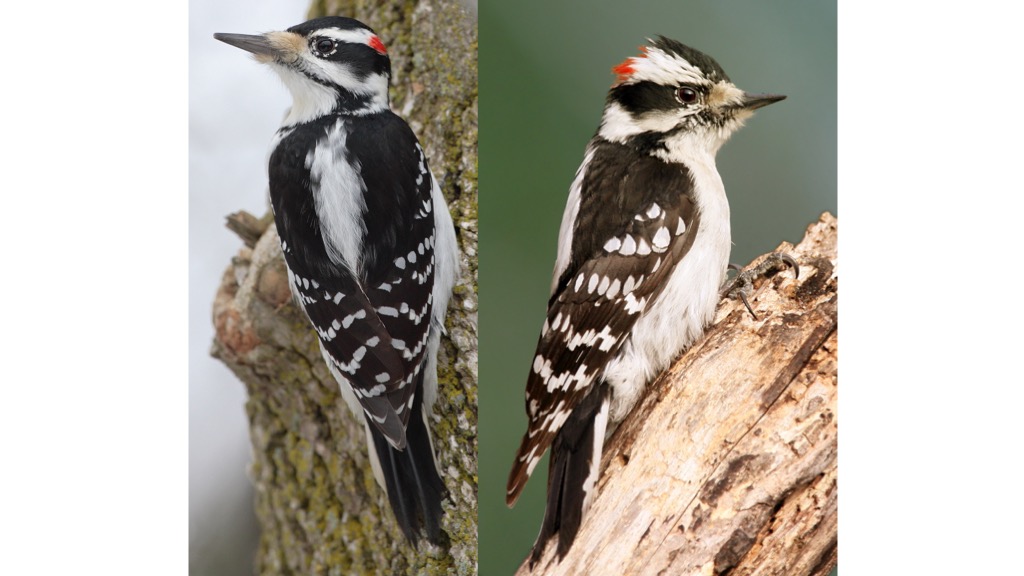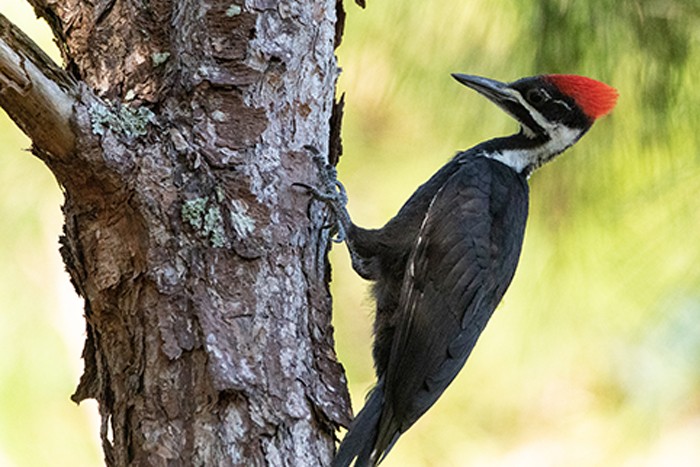Woodpeckers: A Comprehensive Overview to Recognizing These Special Birds
Woodpeckers, with their distinct habits and physical qualities, have long captivated the inquisitiveness of ornithologists and nature fanatics alike. From their rhythmic drumming echoing via the timbers to their exceptional adaptations for scaling tree trunks with ease, these birds offer a remarkable research study in avian biology. Nonetheless, what genuinely sets woodpeckers apart is not just their striking look but also their essential function in maintaining the fragile balance of ecosystems. As we explore the detailed composition, varied species, and eco-friendly importance of woodpeckers, a much deeper gratitude for these unique birds and the secrets they hold unfolds.

Woodpeckers' Drumming Habits
Woodpeckers display a rhythmic and accurate drumming behavior that offers numerous necessary features in their lives. This habits is mainly associated with communication, region protection, and foraging. The unique drumming noise is created by the rapid pecking of their beaks against hard surface areas such as tree trunks, branches, or also metal things.
Interaction is a vital element of woodpecker behavior, and drumming plays a substantial role in this procedure. Woodpeckers make use of drumming to establish their presence, bring in companions, and keep call with their partners and spawn. The frequency, intensity, and duration of drumming sequences share certain messages to various other woodpeckers in the area.
Along with interaction, woodpeckers use drumming actions for area defense. Woodpeckers in Florida. The loud and recurring drumming works as a warning to possible intruders, indicating that the area is already asserted. By developing their area through drumming, woodpeckers lower the probability of conflicts over useful sources such as food and nesting sites
Furthermore, woodpeckers additionally use drumming as a foraging strategy. The balanced pecking helps them locate pests concealing beneath the bark of trees by producing resonances that disrupt the victim's cover-up. This behavior showcases the versatility and ingenuity of woodpeckers in using their drumming abilities for multiple vital purposes.
Unique Adjustments for Tree Climbing
Having actually understood the art of drumming to connect, protect area, and forage, woodpeckers have developed unique adaptations that promote their amazing climbing capacities in their arboreal environments. One essential adaptation is their customized feet. Woodpeckers have zygodactyl feet, with 2 toes directing forward and two toes pointing backward. This arrangement offers a strong grip on the vertical surface areas of trees, allowing them to cling effortlessly while foraging for bugs or drumming. Additionally, woodpeckers have rigid tail feathers that serve as a prop to sustain their bodies as they climb. These tail feathers supply stability and balance, allowing woodpeckers to maneuver up tree trunks with accuracy and dexterity.
Moreover, woodpeckers have effective neck muscle mass and a special skull structure that help in their climbing up capacities. Their strong neck muscular tissues allow them to swiftly eat tree bark without experiencing whiplash, while their thick skull and small mind function as shock absorbers, securing them from the effect of repeated drumming. These Continue adjustments collectively enable woodpeckers to browse the upright world of trees with performance and poise.

Role of Woodpeckers in Ecosystems
By foraging for bugs under the bark of trees, woodpeckers assist regulate insect populations, avoiding outbreaks that could harm the general health and wellness of the forest. Additionally, woodpeckers create tooth cavities in trees that offer as vital nesting websites for a range of other bird varieties, advertising biodiversity within the ecosystem.
Additionally, the drumming and articulations of woodpeckers play a crucial duty in interaction and region facility. These noises not only offer to bring in friends yet likewise aid specify borders in between various woodpecker areas, decreasing conflicts and advertising a harmonious coexistence within the woodland community. Overall, the visibility of woodpeckers in forest communities highlights their significance as keystone varieties, influencing the dynamics and operating of these habitats in complex methods.
Anatomy: Specialized Beaks and Feet
In the complex internet of forest ecological communities, the specialized beaks and feet of woodpeckers are vital adjustments that enable them to meet their essential environmental duties. Woodpeckers possess special physiological features that are particularly designed to aid them in their foraging and nesting habits.
One of the most distinctive function of woodpeckers is their solid, chisel-shaped beaks. These beaks are completely adjusted for exploration into wood to discover pests, larvae, and sap hidden below the bark of trees. The solid muscular tissues and sturdy structure of their look at this web-site beaks enable woodpeckers to peck at a price of approximately 20 times per secondly without causing damage to their skulls.
Furthermore, woodpeckers have actually specialized feet that help in their acrobatic climbing up capabilities. Their feet have 2 toes directing onward and 2 toes aiming backward, providing a strong hold on vertical surfaces (Woodpeckers in Florida). This special foot arrangement, together with rigid tail plumes that function as an encouraging prop, permits woodpeckers to Our site hold on to tree trunks and branches effortlessly while they search for food or excavate nesting dental caries
Woodpecker Species Variety
Woodpeckers are a varied team of birds discovered across numerous environments worldwide, with over 200 recognized types displaying adaptations to different environments. Woodpeckers have actually advanced to populate a range of settings, from forests and timberlands to meadows and deserts, each presenting one-of-a-kind difficulties that have affected the evolution of distinctive woodpecker types.
These adjustments make it possible for woodpeckers to forage efficiently in their particular environments, lowering competition among types and advertising particular niche differentiation. Furthermore, geographical seclusion and historic variables have played a role in shaping the distribution and diversity of woodpecker types, leading to the large selection of specialized adaptations seen in these fascinating birds.
/https://tf-cmsv2-smithsonianmag-media.s3.amazonaws.com/filer_public/30/ac/30acf469-09cd-4fcc-a812-1aa30f477578/aprmay2024_l09_woodpeckers.jpg)
Conclusion
In verdict, woodpeckers are fascinating birds that show unique drumming habits, specialized adaptations for tree climbing, and play essential duties in communities. With a varied range of woodpecker types located worldwide, these birds are important for keeping the health and equilibrium of woodlands and woodlands.
Comments on “Exploring Woodpeckers in Florida Habitats: Where to Spot These Birds”